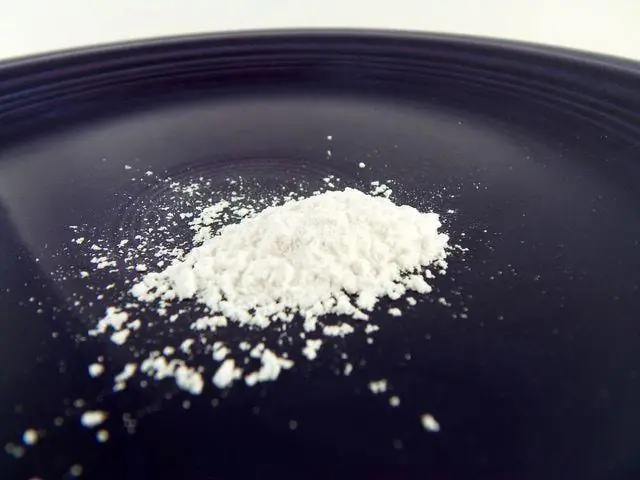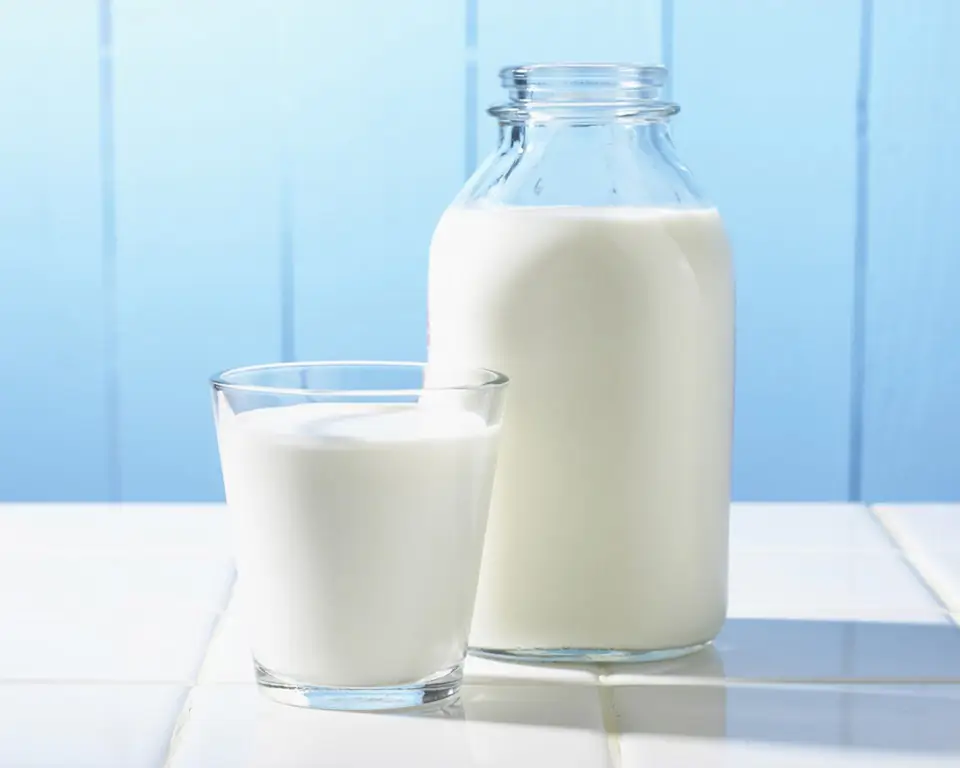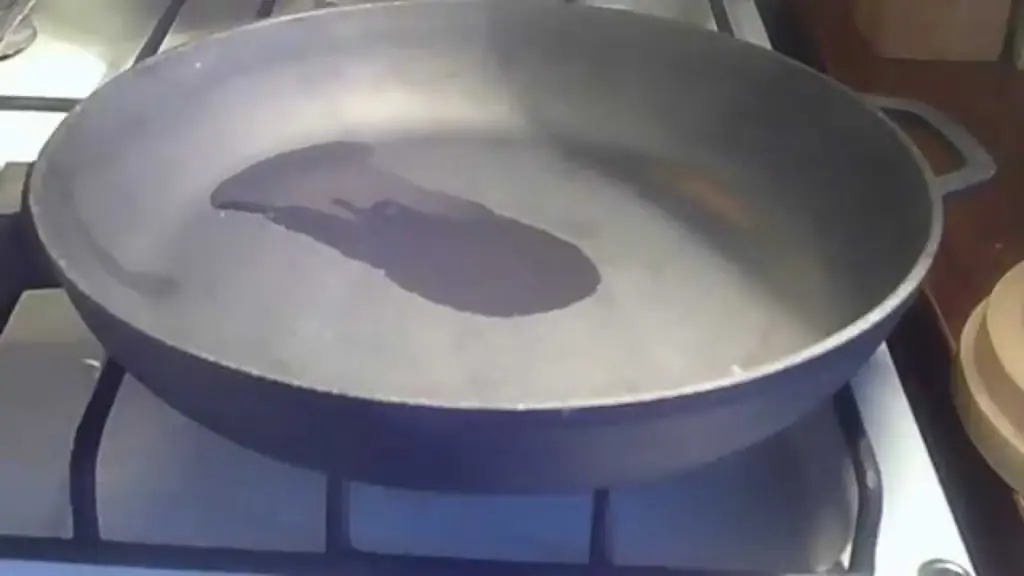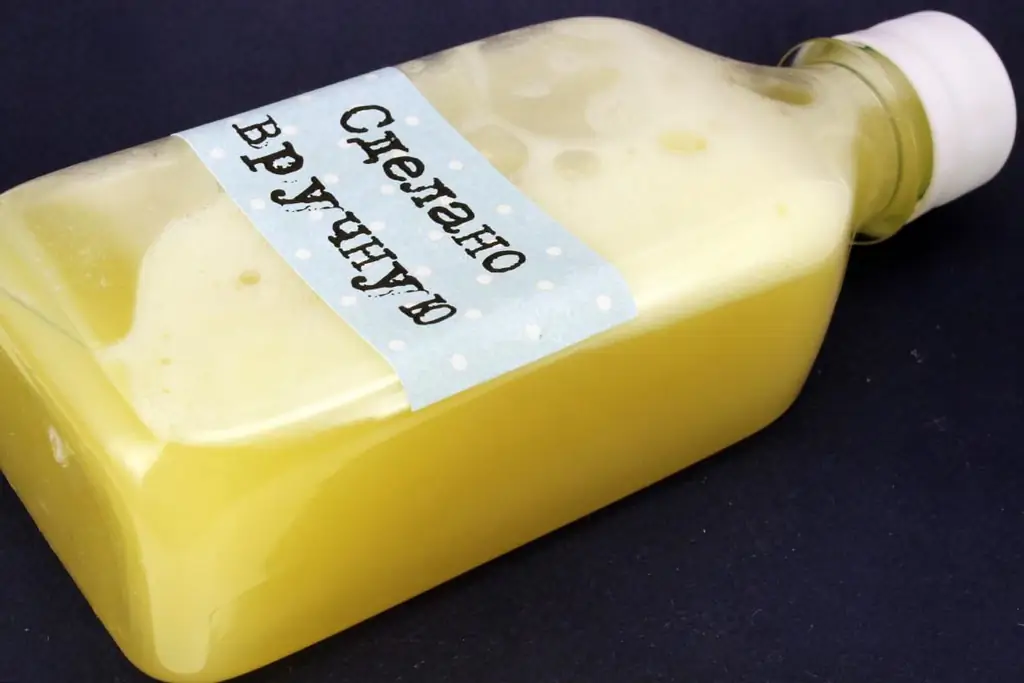
Table of contents:
- Author Bailey Albertson [email protected].
- Public 2023-12-17 12:53.
- Last modified 2025-06-01 07:32.
How to properly boil laundry: a return to lost traditions

Recently, we are increasingly returning to the origins, proven by decades and undeservedly forgotten recipes of our mothers and grandmothers. Today we'll talk about boiling: why and in what cases such a method of processing linen is needed, how to carry it out correctly in order to achieve the maximum effect.
Content
-
1 Why we abandoned boiling and how necessary this method is today
- 1.1 Video: Aunt Asya arrived, or how the commercial won the hearts of millions
- 1.2 When you can't do without boiling
- 2 What you need to boil
- 3 Preliminary preparation
- 4 Boiling technology
-
5 Boiling agents
-
5.1 White laundry
5.1.1 Video: what means can be used for boiling
- 5.2 Colored products
-
5.3 Baby stuff
5.3.1 Video: how to bleach baby clothes at home
-
5.4 Kitchen textiles
5.4.1 Video: how to remove greasy stains from kitchen towels
-
Why we gave up boiling and how necessary this method is today
In 1997, a commercial for Procter & Gamble products was released on TV screens for the first time, in which a woman who came to visit told the boy and his mother why it was no longer necessary to boil the laundry. Tired of the economic reforms and cataclysms of the post-perestroika period, but not yet spoiled by an abundance of advertising and in some ways even naive, we easily believed everything that was broadcast from the screens. Then, in the distant 90s, many perceived the video as a guide to action. Traditional boiling was declared an obsolete relic of the past and gave way to newfangled products. This is how the era of modern stain removers and bleaching agents began.

The first stain remover advertised for great results without boiling
Video: aunt Asya arrived, or how the commercial won the hearts of millions
And, it would seem, high-speed professional tools perfectly fit into the fast pace of our life and the daily kaleidoscope of events: home, family, work, friends, but something is missing. Either the linen over time acquires a yellow or gray tint and no bleach can restore its former whiteness. Either stubborn stains are resistant to modern stain removers …
And we increasingly began to wonder if the traditional way that our grandmothers used for many years was forgotten in vain? After all, without powders, bleaches and super-sophisticated washing machines, they managed to achieve the perfect whiteness of white things, and the colored ones looked no worse.
When you can't do without boiling
Without a doubt, there are ardent opponents of this method who sincerely do not understand what can force a person to do laundry in the 21st century. And in some ways they will be right. In the age of scientific and technological progress, there are many ways to disinfect and cleanse. For example, antibacterial agents, steam generators, ultraviolet and bactericidal lamps, ozonizers, ionizers, microwave devices and much more. There are also washing machines with temperature control 95 of C, which is very close to the boiling point and in some cases can replace this procedure. However, a decent replacement is not always possible, and in some cases boiling the laundry is the only acceptable way.
- Clothes for children and especially clothes for newborns. The high temperature will help to qualitatively remove greasy and other stains from food, watercolor "drawings" of young artists on clothes, traces of urine and regurgitation. In addition, such treatment disinfects the laundry, which is of great importance for the little ones. You can use only baby and laundry soap with the addition of soda for boiling. No matter what manufacturers claim about the safe composition of industrial detergents, washing powders contain a large amount of chemicals that are very dangerous for a developing child's body and can provoke allergic reactions and other equally unpleasant diseases.
- Underwear and bedding for people with sensitive skin and a tendency to allergic reactions. As in the case of children's clothing, it is better to refrain from using household chemicals, and use a soap and soda solution for boiling.
- Clothes and accessories of infectious patients. Many microbes and viruses are highly resistant to heat. And to destroy them, it is not enough to wash things even in very hot water, it is precisely boiling that is necessary. For example, the Hepatitis virus, better known as "jaundice", dies after 25-30 minutes, and the destruction of staphylococcus occurs only after 2.5-3 hours of boiling.
- For the same reason, medical gowns and clothes of people caring for patients should be boiled.
- It will not be superfluous to boil bed linen and kitchen textiles. Indeed, in addition to an excellent disinfectant function, boiling helps to get rid of various stains and stubborn dirt.
- It is sometimes acceptable to use boiling work clothes. There are cases when this method helped to get rid of even difficult to remove stains of fuel oil.
- In some cases, boiling helps return heavily washed items to their original cleanliness and freshness.
What you need to boil
Most housewives, who 20 years ago refused to boil linen, are unlikely to have the necessary equipment. And some never had it. Therefore, you have to purchase a new one. Or adapt what is available for work. So, for the boiling process you will need:
-
Cooking pot, large saucepan, basin or bucket with lid. Better to use enamelled containers or stainless steel. Galvanized buckets can oxidize when boiled, resulting in rust stains on the laundry. For the same reason, you should pay attention to the condition of the boiling tank. There should be no traces of rust, chips or any contamination on the inner surface. All defects in the container during the process will certainly affect the things being digested, and it may happen that after boiling it is necessary to remove new stains formed during this process. Choose the volume based on your needs: the container should hold the required amount of laundry and at the same time it should not be strongly compressed. The optimal volume is 10 liters. If you have to boil a large number of things frequently, you can purchase larger dishes. But the process itself in this case will take more time.

Linen tank For boiling, an enameled tank with a lid, specially designed for such purposes, is best suited.
-
Wooden tongs. It's good if you can get this handy tool. With its help, you can not only mix the laundry during boiling, but also remove a separate item from the container, if the need arises. For example, with a different duration of the process for things boiling at the same time. In the absence of tongs for stirring the laundry during boiling, you can use a wooden stick that has been previously cleaned and scalded with boiling water.

Tongs for clothes Wooden tongs will help to mix the laundry well during boiling
- Detergent. It all depends on the purpose of boiling: disinfection, bleaching, removal of stains or stubborn dirt. And of course, from personal preference. You can use powders or gels, bleaches with or without chlorine, soaps, shampoos, and numerous folk remedies. Sometimes, for a stronger impact, it is advisable to combine several components. In fact, the choice of funds is so great that it deserves a separate article. But we'll come back to it below.
Preliminary preparation
To ensure that the boiling process is efficient and does not deliver any surprises, take a few minutes for the preparatory stage, in which there is nothing complicated.
- Study the label on the product carefully. It should have a corresponding mark in the form of a “3 dots” sign or the number “95”. This means that the product is subject to high temperature processing and can be boiled. If there is no such mark, and a lower temperature is recommended in the washing parameters, it is better to refuse boiling. The product can lose color or change the structure of the fibers, as a result of which the laundry will become unusable.
- Sort items by color and fiber composition. Boil white and colored products in different containers or at different times. Otherwise, white things will acquire all sorts of shades of color. Do not boil incompatible colored laundry at the same time. For example, if you put yellow and blue things in one tank, the yellow ones will acquire a green tint during boiling. And when you combine blue and red, the shade will be purple on the red product.
- It is also advisable to separate things according to the degree of pollution. Tough stains require a longer boil. Whereas light dirt can be boiled for a minimum time. But getting them out of a boiling tank is not a pleasant procedure. And besides, it is also traumatic. Any careless movement and burns are guaranteed.
- Shake things out to remove excess dust and debris. If you put jeans with dried lumps of dirt in the tank, the water for boiling will become dirty almost immediately and the process itself is ineffective. Rinse or wash the product to remove some of the dirt. It is sometimes advisable to soak heavily dirty things for 2-3 hours in warm water with the addition of detergent, and only then boil.
Boiling technology
Knowing the basic rules of the process is half the battle. They will help to qualitatively disinfect linen, remove dirt and stains. At the same time, the appearance of textiles, the structure and strength of the fibers of the fabric will not receive any damage.
- Place an old white towel or heavy cloth on the bottom of the tank. In case of force majeure, it will protect the laundry from burning. White is needed so that the fabric does not fade and does not spoil the laundry during boiling.
- Pour clean water into the tank, filling about two thirds of the container. Put on gas and bring to a slightly warm temperature. In order not to lift a heavy tank of water to the height of the stove, it is convenient to follow this sequence: take a little water at once, put it on gas, and add the rest of the water to the tank already standing on gas using a mug, ladle or a small saucepan.
- Add detergent. Mix well. Make sure the product is completely dissolved.
-
Load things. Do not forget that there should be few of them and they should be completely submerged in water. When the tank is tightly loaded, the boiling quality decreases several times. I repeat, the water should be warm, but in no case hot. If you put the laundry in boiling water, the stains on it will fix and it will be extremely difficult to remove them. It is better to use very cold water. However, in this case, some detergents may not completely dissolve.

Boiling laundry Load the tub with enough laundry so that it can be easily interfered with during boiling.
- Bring water and laundry in the tub to a boil over medium heat. Then reduce throttle to minimum. Cover the tank with a lid to reduce evaporation. But don't leave the process unattended. Boiling water with detergent foams well and can spill over the edge onto the stove, extinguishing the burner.
- Open a window or window to provide fresh air. Detergent vapors are not the best breathing ingredient. In addition, the digestion process is accompanied by a significant increase in air humidity in the room. And an open window will come in handy.
- Stir the laundry periodically with a wooden tong. This contributes to an even and better quality result.
- There is no hard limit on boiling time. The cooking time depends on the degree of soiling and can range from 30 minutes to 2-3 hours. Items soaked beforehand tend to cleanse faster when boiled. When stirring the laundry in the tub, pay attention to the cleaning steps. Once things have reached the required level of cleanliness, the process can be finished.
- Turn off the gas, but leave the tank with things and water on the stove to cool.
- Thoroughly wring out the laundry by hand and rinse 2-3 times in clean water. To save time and effort, it is convenient to rinse in the washing machine.
- If not all dirt has come off during the process, wash it while the laundry is still warm. Boiling will break down the texture of stains and can be removed with minimal effort.
- Drying is best done outdoors in the shade. A warm and light breeze dries quickly. And the things themselves will acquire extraordinary freshness.
Boiling agents
As noted above, different types of detergents can be used based on personal preference and how dirty the laundry is. For disinfection, you can not add anything to the water at all, just boil the laundry in clean water. But in this case, the boiling time is important, since some types of bacteria and microbes are able to live for a certain time even in boiling water. Let's take a look at some of the most effective products for different types of laundry.
White linen
To achieve a full-fledged result, in order not only to remove dirt, but also to whiten products, many housewives most often use the simplest method, combining washing powder and chlorine bleach in the digestion tank. This combination, combined with boiling, really gives a good result. But here it must be borne in mind that chlorine-containing agents are very aggressive and can have a negative effect on the fibers of the fabric, reducing their strength. Therefore, this method should be used no more often than once every 5-6 washes.

Boiling helps return white things to their pristine whiteness
Action option:
- For boiling, add 1 cup of any washing powder and 0.5 cups of bleach to a 10 liter tank.
- Load the laundry and boil for 30 minutes, stirring occasionally.
- Rinse the items.
A good bleaching compound can be made with 3% hydrogen peroxide, salt, and laundry detergent. The salt effectively removes many types of stains. The powder provides general cleaning of the fabric from dirt. And peroxide qualitatively restores the whiteness of products. Depending on the purpose of boiling, out of the three components, you can take only one or two. For example, if the laundry is clean and free of stains, but it needs to be bleached, use only peroxide and you will get the desired result. For 10 liters of water, add:
- Washing powder - 1 glass.
- Hydrogen peroxide 3% - 100 ml.
- Salt - 500 grams.
A good solution for whitening underwear is to use an alcoholic solution of boric acid. The product whitens white things well and also provides preventive protection against fungus, which is important for people suffering from this disease.
- Dissolve 30 ml of pharmaceutical boric acid in 10 liters of warm water.
- Soak the laundry in the solution for 30 minutes.
- Then put on gas and simmer for one hour.
Video: what products can be used for boiling
Colored products
As with white laundry, detergents can be used. But the choice should be stopped on products for colored fabrics. They do not contain additives that can dissolve dyes. For the same reason, it is not recommended to use bleach.
- For boiling, dissolve 1 cup of powder in 10 liters of warm water.
- If there are stains on the product, you can add 2 tablespoons of ammonia. It effectively fights stains of various origins.
- Boil should be no more than 30 minutes.
Folk remedies can be used no less effectively for boiling. The most effective formulation is made from baking soda and laundry soap.
- Grate half the bar of laundry soap with a grater. Better to use a dark 72%. It contains natural ingredients and is excellent at removing stains.
- Pour the soap into a small container and add 1 liter of warm water. Put the mixture on low heat and stirring continuously, bring to a boil. During this time, the soap should completely dissolve and you will get a liquid gel at the exit.
- Add 100 grams of baking soda to it. Stir well. The boiling agent is ready.
- Dissolve the resulting composition in 10 liters of water. Load the laundry and boil for 30-40 minutes.
Things that do not need serious cleaning, but turned out to be heavily washed in the course of long-term use, can be freshened with salt and soda.
- Add one cup each of salt and baking soda to the water tank. Stir well.
- Load clean products and simmer for half an hour over low heat.

Boiling colored items helps housewives to get rid of many stubborn stains.
Kids' things
It is important to use safe means for boiling. Therefore, baby or laundry soap and baking soda are best suited for this. Laundry soap will perfectly cope with various types of dirt, including hard-to-remove greasy stains, which are always on the clothes of the smallest. It consists of natural ingredients and therefore will not harm the health of the child. And baking soda will enhance the cleansing effect and soften the water.
- Fill the container with the required amount of water. Add 1 tablespoon per liter of baking soda. Stir well.
- Soak your laundry in water. As soon as the things get wet, you can take one item out of the container one by one, squeeze it lightly and thoroughly lather with laundry soap. Treat all products in this way. Pay special attention to problem areas with heavy dirt.
- Leave well-soaped items in the soda solution for 20-30 minutes. This procedure will soften the fibers of the fabric and promote better cleansing during boiling.
- Boil for one hour. Then rinse.
Video: how to whiten baby clothes at home
Kitchen textiles
Kitchen towels usually get very dirty with use. If the stains are not removed immediately, which is almost always impossible, they become obsolete, and subsequently very difficult to remove. To solve this problem, there is a great recipe that tackles even very stubborn dirt.
- Pour 10 liters of warm water into the tank.
- Add 1 cup of washing powder. You can take whatever you like best.
- Then add 2 tablespoons of bleach. When choosing, keep in mind that chlorine can discolor fabric. Experienced housewives often recommend using Persol. This is a powder bleach that effectively fulfills its tasks and at the same time does not contain chlorine, which means it will not harm colored products.
- The third component can be surprising. This is a vegetable oil. By itself, it leaves greasy stains on tissues, but when combined with other ingredients, it enhances the cleansing effect. You need to take it quite a bit, no more than 2 teaspoons.
- Stir the mixture well. Make sure the powders are completely dissolved.
- Load the towels, put the tank on the fire and bring to a boil. Then turn off the gas.
- If initially the contamination was not very difficult, after the water cools down, things can be rinsed immediately. For stubborn stains, it is best to leave it on for several hours. For example, until the next day.
- After rinsing, wash the towels as usual and evaluate the result.
Video: how to remove greasy stains from kitchen towels
As you can see, boiling the laundry is easy. It is only necessary to carry out the process correctly, and our advice will help you with this. And the reward will be clean and disinfected clothes without stains.
Recommended:
How To Replace Baking Powder For Dough In Baking: Slaked Soda And Other Options For Cake, Biscuit And Other Products + Photos And Videos

How to make lush baking can be done without baking powder at home. What to replace. Useful Tips
How To Check The Quality And Naturalness Of Milk At Home: Checking With Iodine And Other Methods, Determining The Freshness + Photos And Videos

How to determine the freshness and quality of milk at home: several proven methods. Criteria for assessing the quality of milk powder
How To Ignite A Cast Iron Pan Before The First Use And In Other Cases: Salt, Oil And Other Methods + Photos And Videos

How to ignite cast iron pans. Quick ways to get rid of engine oil residues, rust and carbon deposits
Japanese Laundry Powder: Features Of The Product, Popular Manufacturers, Safety And Effectiveness Reviews

Features of Japanese washing powders. Instructions for use. Review of popular tools. Reviews. Photo
How To Make A Do-it-yourself Dishwashing Detergent Using Soda, Hydrogen Peroxide, Laundry Soap, Mustard Powder

How to replace purchased dishwashing detergents, the pros and cons of household and chemical products. Crafting recipes using simple ingredients
